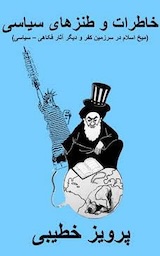Iran International:
Voter turnout in Iran’s Friday snap presidential election reveals a sharp decline across various provinces, particularly in regions that were centers of protests in 2022 and 2023.
Based on official and unofficial tallies, significant drops in voter engagement were recorded in the capital Tehran and in Kordestan province, both epicenters of recent anti-government protests, as well as in restive Sistan-Baluchestan province, which saw a dramatic 23-percent decrease in turnout.
The nationwide protests, ignited by the death in custody of Kurdish Mahsa Amini, saw Kordestan (Kurdistan) among the first to rise up against the clerical rulers.
In the presidential vote, greater Tehran and Kordestan each recorded a mere 23 percent participation rate, down from 26 percent and 37.4 percent respectively in 2021. These regions, at the forefront of protests, reflect citizens’ frustration over systemic corruption, economic hardships, repression and lack of political freedoms.
Voter turnout In Sistan-Baluchestan in southeastern Iran nosedived from 62.8 percent in 2021 to just 40 percent in 2024. This marginalized and underrepresented region faces severe socio-economic challenges and repression.
During Bloody Friday on September 30, 2022, security forces killed around 100 protesters and injured hundreds more. The government has repressed the weekly protests following Friday prayers, leading to the arrest of many Baluch Sunnis.
Gilan province also saw a significant decrease of 24.8 percent, while Khuzestan dropped by 20.4 percent. In contrast, a few provinces showed minor increases, such as Tehran Province, which saw a 10.6 percent rise. However, such increases are overshadowed by the widespread declines.
Go to link










Comments